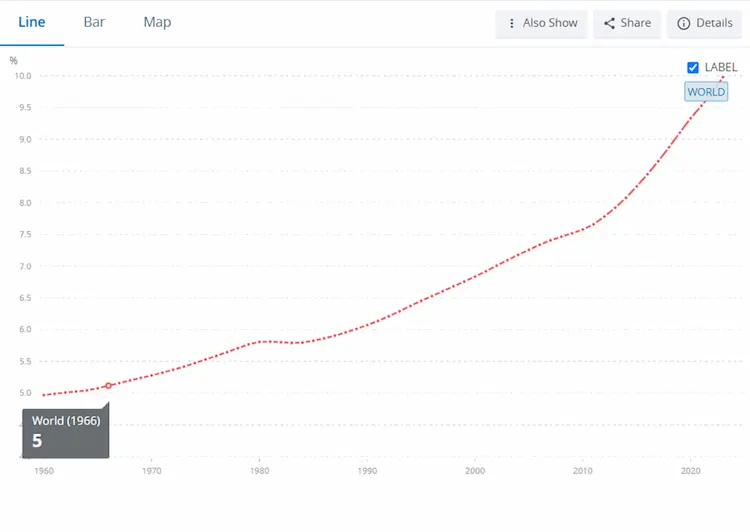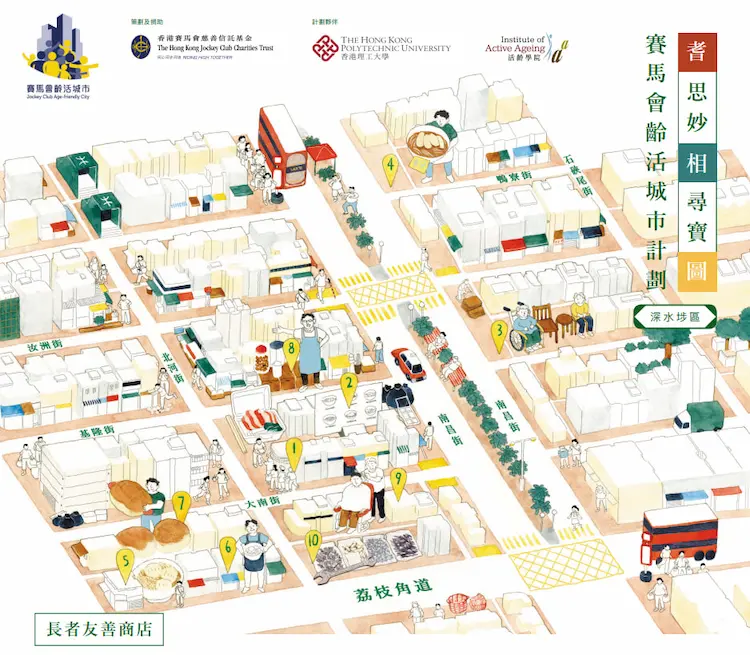As cities confront rapid population aging, age-friendly urban planning is emerging as both a social necessity and a strategic growth opportunity. This paper explores how aligning urban design, housing, and local economies with the needs of older adults can drive innovation, resilience, and inclusive development. From smart technologies to care-oriented infrastructure, age-inclusive cities are reshaping the future of urban living and business.
In today’s urban world, demographic trends are no longer a background concern: they are a driving force. While urban areas still attract young people, the share of residents aged 65+ is rising significantly and reshaping urban needs and priorities. For example, by 2040, nearly 28% of urban residents in OECD countries will be aged 65 or older. Meanwhile, city stakeholders continue to focus planning and innovation largely on younger populations, overlooking the fast-growing share of older adults who are living longer, staying active, and seeking to remain in their communities.

Age-friendly city planning is not just socially responsible — it is an opportunity for businesses working in smart city technologies and for planners tasked with creating sustainable and livable cities. This paper explores opportunities for businesses and urban solutions through three key dimensions: urban design, housing, and age-responsive urban economies.
Creating elder-inclusive cities improves access to opportunity, strengthens social cohesion, and boosts long-term resilience.
Age-inclusive urban design: aligning planning and technology
Modern cities must meet the needs of slower walkers, individuals with mobility challenges, and digitally engaged seniors. Urban design and land use planning should enhance access to opportunities, services, and jobs while improving safety, sustainability, equity, and well-being through smarter transport and inclusive public spaces. These urban innovations for ageing populations can serve as inspiration for all residents.
Cities like Stockholm, New York, Paris, and Montreal, implement Summer Street programmes in certain areas and for certain periods. These initiatives slow or remove car traffic and replace it with spaces designed for leisurely walking, rest, and social interaction among older residents.
The concept of the 15-minute city (as discussed earlier here) makes urban life more comfortable for older adults with limited mobility by ensuring essential services are within easy walking distance. For instance, Paris’s model supports aging in place, reduces reliance on cars, and enhances autonomy through accessible, walkable neighborhoods.
A good illustration is Bogota, which created Care Blocks to reduce unpaid care burdens and expand access to services for dependent adults and their caregivers. Each Block clusters services: healthcare, adult education, social assistance – within a 15–20 minute walk. Care Buses connect remote areas to urban services, while Care Home Delivery supports immobile caregivers. The program also trains family members in caregiving responsibilities to share the burden more equally. This model integrates spatial planning, gender equity, and data-driven service delivery into one age- and care-inclusive urban solution.

One notable program is the Jockey Club Age-friendly City Project, launched in 2015 by The Hong Kong Jockey Club Charities Trust in partnership with Hong Kong’s leading gerontology research institutes, goes far beyond creating community maps of age-friendly shops, facilities, and walking routes. It applies the principles of age-friendly city planning across all 18 districts of Hong Kong through a bottom-up, district-based, and evidence-driven model. This comprehensive approach integrates the needs of older adults into urban development by fostering collaboration among government, academia, NGOs, businesses, and local communities. As a result, all districts have joined the WHO Global Network for Age-friendly Cities and Communities.
What smart technology opportunities emerge for businesses and urban planners?
- Digital twins simulate how older residents move through cities.
- Sensor-based street design helps detect and correct infrastructure blind spots that may pose risks to seniors.
- Accessible wayfinding apps enhance autonomy for people with cognitive or mobility challenges, especially older adults.
Housing innovation: a key to an age-friendly city
Cities face growing pressure from an aging population in need of safe, affordable, and accessible housing. Cities respond in different ways, and a variety of examples show how housing can support people as they age. Some focus on retrofitting existing buildings, others develop new models that enable aging in place. These approaches reflect diverse needs, budgets, and local contexts but all aim to make cities more livable for older generations.
For instance, France launched the MaPrimeAdapt’ subsidy to support home renovations that improve accessibility for its rapidly aging population. By merging three national programs, it aims to upgrade housing and stimulate the construction sector. Currently, only 6% of private homes are age-adapted.
Some city administrations choose redeveloping brownfield sites. In Bologna, Italy, the city renovated an unused public building to create accessible housing for low-income older residents. The building offers shared amenities to foster community and mutual support. Its central location gives residents access to services they might otherwise be unable to reach.
What are the business opportunities and governance solutions?
- Modular and accessible smart homes offer scalable solutions for diverse age needs, increasing flexibility and long-term property value.
- Home sensors and assistive technology support independent living for older adults, creating demand for health-tech innovation.
- Senior-focused co-living platforms connect age groups, reducing isolation and unlocking new rental and service models.
- Energy-efficient retrofitting markets combine sustainability with age-friendly design, opening dual investment and renovation opportunities.
Age-responsive urban economies: the silver dividend
Integrating older workers, consumers, and entrepreneurs pays off. The “silver economy,” spending linked to the 50+ population, according to OECD Urban Studies , is projected to exceed €6.4 trillion in the EU by 2025. Neglecting the needs of older adults in urban design can result in missed economic opportunities. This economy encompasses diverse sectors like healthcare, housing, mobility, and technology catering to the growing population over 50. It is projected to contribute significantly to economic growth and job creation in ageing cities.
For example, Manchester runs a comprehensive program supporting older residents through initiatives like the Local Industrial Strategy and the Good Employment Charter, co-designed with local businesses, nonprofits, and citizens. Thanks to the Adult Education Budget, over 29,000 people have gained the skills needed to succeed in the local job market. The program also addresses the needs of older adults who wish to remain active in the workforce.

Digitalization has become a main part of inclusive policy for all ages. For instance, Barcelona, Spain, has invested in the Barcelona Health Hub (BHH), a non-profit that promotes digital health by connecting start-ups, healthcare organizations, corporations, and investors. The BHH drives innovation in health technology for ageing populations, supporting solutions like telemedicine, remote monitoring, and wellness programs for seniors.
The City of Helsinki provides a comprehensive array of services tailored to support active and engaged ageing. From numerous sports facilities and cultural centers to libraries and museums, older residents have access to a wide variety of meaningful activities. These services are not only diverse but also accessible — many are free or low-cost, available both in person and online, and scheduled during the daytime to suit the needs of seniors.
There are many ways to realize economic benefits from adopting the age-friendly city concept. Key smart city technology drivers include:
- Digital health platforms provide accessible and user-friendly tools to monitor and manage health conditions, especially benefiting older adults by enabling remote care and timely interventions.
- Reskilling and upskilling apps offer tailored learning opportunities that help older workers update their skills and adapt to changing job markets, promoting extended workforce participation.
- Age-diverse HR technology supports inclusive recruitment and management practices by addressing the unique needs of older employees and fostering intergenerational collaboration where relevant.
- Data platforms designed to match senior talent with local work use advanced analytics to connect experienced older workers with suitable job opportunities, helping them remain active and valued in the workforce.
Cities of the future won’t thrive by optimizing for a narrow age range. They will lead by being adaptable, inclusive, and deeply responsive to the growing demographic of older adults. For businesses, this is a growth market: from smart mobility to digital health to age-adapted housing. For planners, this is how to build resilient, equitable cities that truly last. An age-friendly city framework isn’t about doing more for one group. It’s about doing better for the aging majority.


